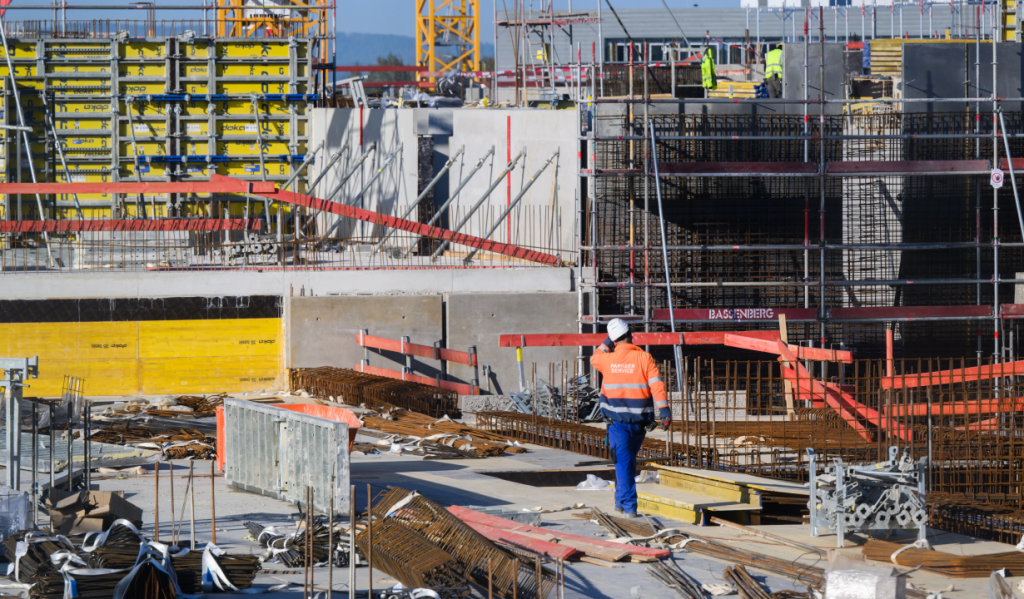
Five years ago, Billy Keeper wouldn’t have known what a datacentre was. Today, at just 24, he has climbed the ranks from a laborer at Datalec Precision Installations to an electrical supervisor overseeing teams of up to 40 workers in the high-stakes world of datacentre construction.
In his role, Billy manages everything from health and safety protocols to ensuring smooth operations and client relations. These clients are vital players in the technology sector, as datacentres serve as the backbone for cloud services offered by major tech companies like Amazon, Microsoft, and Facebook. Other organizations either operate their own facilities or rely on co-location datacentres to host their computer systems.
The demand for datacentre space has surged dramatically, largely driven by the rise of artificial intelligence, which necessitates advanced computing power and significant energy resources. According to real estate firm Savills, the total datacentre floorspace in Europe was just over six million square feet in 2015, but projections indicate it will exceed ten million square feet by the end of this year. In London alone, datacentre activity is expected to nearly triple by 2025 compared to 2019 levels, as reported by CBRE.
However, meeting this growing demand presents substantial challenges. Dame Dawn Childs, CEO of Pure Data Centres Group, highlights that the industry faces hurdles in securing land and power sources for new builds. The political landscape is responding, with Labour’s election manifesto promising reforms to planning regulations that would facilitate the construction of critical infrastructure, including datacentres and their supporting power networks.
Another pressing issue is the shortage of skilled labor in the construction sector. “There simply aren’t enough skilled workers to meet the current demand,” says Dame Dawn. For companies like Datalec, recruiting from traditional construction backgrounds isn’t sufficient. Datacentre operators, whether co-location specialists or large tech firms, have unique needs that require highly specialized skills.
Matt Perrier-Flint, Datalec’s operations director for the UK and Ireland, notes that the datacentre market is distinctly rigorous. “It’s a fast-paced, highly engineered environment,” he explains, contrasting it with his past experience in commercial and educational construction projects. In datacentre construction, every task is executed in a meticulous and structured manner, particularly when commissioning critical equipment like chiller units that regulate temperature. This process involves multiple tests and verifications before a comprehensive final evaluation.
The operational demands for building or upgrading a datacentre can be intense. Companies often work under strict timelines to avoid disruptions during peak business periods—ecommerce firms, for instance, typically halt construction work as the holiday season approaches. As a result, Datalec’s teams frequently face long hours or even overnight shifts.

Despite the rigorous demands, the financial rewards can be substantial. Experienced electrical installers can earn six-figure salaries, making the field attractive for skilled workers. Nevertheless, companies like Datalec are in a constant struggle to maintain a workforce equipped with the necessary qualifications. The Construction Industry Training Board has forecasted that the UK will need an additional 50,300 construction workers annually for the next five years, raising concerns about an aging workforce.
Dame Dawn points out that, similar to other technical fields, the construction sector is struggling to nurture talent. A significant factor contributing to the labor shortage is the historical emphasis on university education, often at the expense of traditional technical or apprenticeship pathways.
Perrier-Flint recalls a time when pursuing a trade or career in construction was seen as a reliable choice. However, today’s youth have an array of career options, including software development and tech-oriented roles, which can detract from interest in hands-on construction jobs.
Mark Yeeles, vice president of the Secure Power Division at Schneider Electric, who started his career as an apprentice, stresses the importance of early investment in apprenticeships. He acknowledges that the industry often seeks candidates with extensive experience, indicating that the time to ramp up apprentice programs was years ago. In response, Schneider Electric is now increasing its intake of apprentices, doubling the number of positions available.
As the datacentre sector continues to expand, it presents a unique opportunity for individuals seeking lucrative and rewarding careers in a rapidly evolving industry. With the right training and commitment, newcomers can find their place in this essential field, contributing to the backbone of modern technology.








